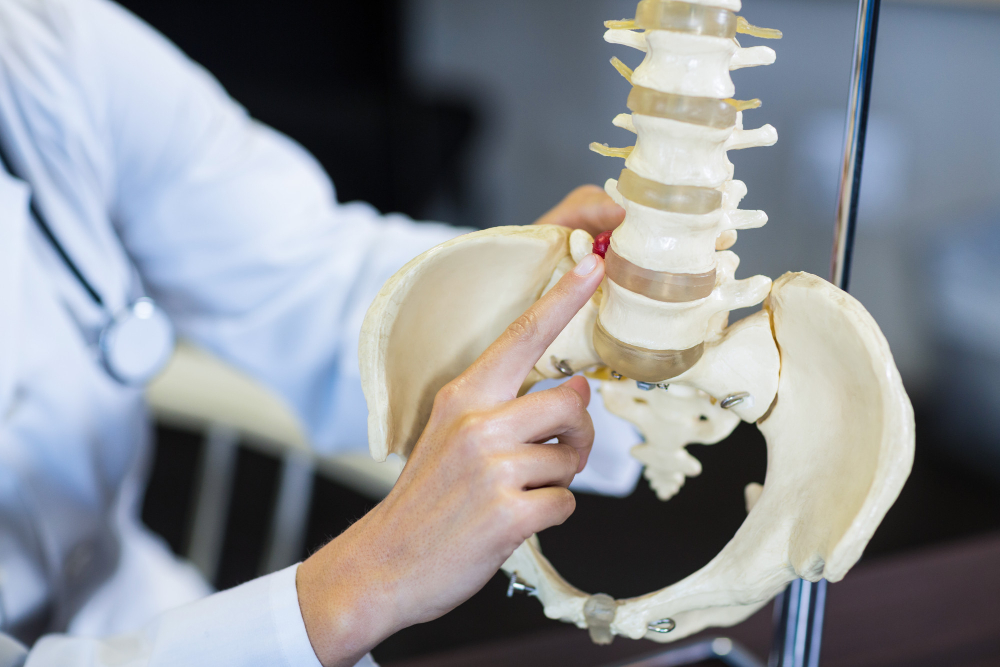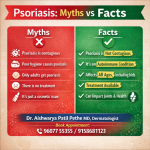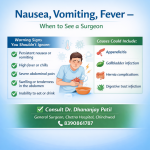Lumbar canal stenosis is a common condition that affects many individuals, particularly as they age. It involves the narrowing of the spinal canal in the lower back, which can lead to pain, numbness, and difficulty walking. At Chetna Hospital, we understand the challenges this condition brings. Our experts are here to provide comprehensive care and information to help you manage lumbar canal stenosis effectively.
What is Lumbar Canal Stenosis?
Lumbar canal stenosis occurs when the spinal canal narrows, putting pressure on the nerves that travel through the lower back into the legs. This narrowing can result from various factors, including age-related changes, arthritis, herniated discs, and injuries. As the space within the spine decreases, the nerves can become compressed, leading to pain and other symptoms.
Symptoms of Lumbar Canal Stenosis
Common symptoms include lower back pain, leg pain, and numbness or tingling in the legs and feet. Many people also experience weakness in the legs, which can make walking difficult. These symptoms often worsen with activities like walking or standing for long periods and improve with sitting or bending forward. If left untreated, lumbar canal stenosis can lead to significant mobility issues.
Diagnosis at Chetna Hospital
At Chetna Hospital, our specialists use advanced imaging techniques to diagnose lumbar canal stenosis. MRI and CT scans provide detailed images of the spine, helping us identify the exact location and severity of the narrowing. The timely diagnosis of lumbar canal stenosis is extremely important for successful medical intervention.
Treatment Options
Conservative Treatments
Physical Therapy: Physical therapy is often the initial course of action in addressing such health issues. It helps strengthen the muscles around the spine, improving stability and reducing pressure on the nerves. A physical therapist can also teach exercises to improve flexibility and posture.
Medications: Over-the-counter pain relievers, like ibuprofen or acetaminophen, are commonly used to alleviate pain and reduce inflammation. In some cases, doctors might recommend more powerful medications or muscle relaxants to address the issue.
Epidural Steroid Injections: These injections are designed to diminish swelling and alleviate discomfort. They are typically used when other conservative treatments have not been effective.
Surgical Treatments
Decompression Surgery: This surgery involves removing part of the bone or tissue that is pressing on the nerves. It can provide significant relief for those with severe symptoms. Spinal Fusion: In some cases, spinal fusion may be necessary to stabilize the spine after decompression surgery. During this procedure, two or more vertebrae are fused together to promote spinal stability and alleviate pain.
Alternative Treatments
Acupuncture: Some people find relief through acupuncture, which involves inserting thin needles into specific points on the body to relieve pain.
Chiropractic Care: Chiropractic adjustments can help align the spine and reduce nerve pressure. However, it’s crucial to seek guidance from a healthcare professional before initiating any new form of treatment.
Myths and Facts About Lumbar Canal Stenosis
Myth: Only Older Adults Get Lumbar Canal Stenosis
Fact: While it is more common in older adults, younger people can also develop this condition. Factors such as congenital spinal conditions, injuries, or herniated discs can lead to stenosis in younger individuals.
Myth: Surgery is the Only Treatment Option
Fact: Many people can manage their symptoms with conservative treatments. Surgery is typically considered only when other treatments have failed or when symptoms are severe.
Myth: Lumbar Canal Stenosis Always Leads to Disability
Fact: With proper treatment and management, many individuals lead active, pain-free lives.
Early diagnosis and intervention are crucial in preventing disability.
Dos and Don’ts for Managing Lumbar Canal Stenosis
Dos
- Do Stay Active: Regular exercise can help maintain flexibility and strength, reducing symptoms.
- Do Maintain a Healthy Weight: Extra weight can put additional pressure on the spine.
- Do Use Proper Lifting Techniques: Bend your knees and keep your back straight when lifting objects.
- Do Follow Your Doctor’s Advice: Adhering to prescribed treatments and recommendations is crucial for managing symptoms.
Don’ts
- Don’t Ignore Symptoms: Early intervention can prevent the condition from worsening.
- Don’t Overdo Physical Activity: While staying active is essential, avoid activities that strain your back excessively.
- Don’t Rely Solely on Medications: While medications can help, they should be part of a comprehensive treatment plan.
- Don’t Self-Diagnose: Always consult a healthcare professional for an accurate diagnosis and appropriate treatment.
Why Choose Chetna Hospital?
At Chetna Hospital, we are committed to providing exceptional care for patients with lumbar canal stenosis. Our multidisciplinary team includes orthopedic surgeons, neurologists, and physical therapists. We use state-of-the-art technology and personalized treatment plans to ensure the best possible outcomes.
Conclusion
Lumbar canal stenosis can be a challenging condition, but understanding it and knowing the available treatment options can make a significant difference. At Chetna Hospital, we are dedicated to helping you navigate this condition with expertise and compassion. If you suspect you have lumbar canal stenosis or are experiencing symptoms, don’t hesitate to contact us. You can count on our team to provide comprehensive support at every stage of your treatment process.













